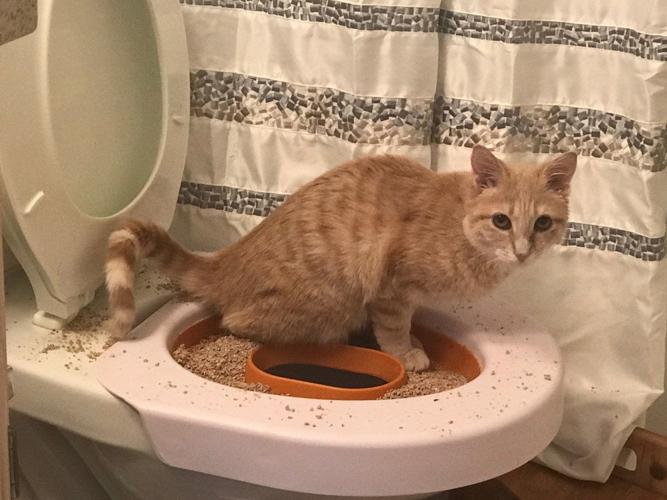How do you feel about 4 Reasons Why Dog Poop Cleanup is Important?

When it pertains to throwing away waste, especially animal waste, lots of people often consider the practical option of flushing it down the commode. Nonetheless, this apparently very easy solution can have major consequences for the atmosphere and public health. In this post, we'll check out why flushing animal waste down the toilet is a poor idea and give different methods for proper disposal.
Introduction
Correct waste disposal is crucial for preserving environmental sustainability and public health. While it may appear harmless to flush animal waste down the commode, it can lead to different concerns, both for the atmosphere and human wellness.
Dangers of flushing animal waste
Environmental effect
Flushing pet waste introduces hazardous germs and virus right into rivers, which can negatively influence water communities. These virus can contaminate water resources and injury marine life, disrupting fragile ecosystems.
Public health worries
Animal waste contains dangerous microorganisms such as E. coli and Salmonella, which can pose major health and wellness dangers to people. Flushing pet waste down the toilet can contaminate water materials, leading to the spread of conditions and infections.
Alternatives to flushing
Rather than flushing animal waste down the bathroom, there are numerous different disposal approaches that are more eco-friendly and sanitary.
Composting
Composting pet waste is an environment-friendly method to throw away it. By composting, raw material is broken down into nutrient-rich soil, which can be utilized to feed yards and plants.
Garbage dump disposal
Throwing away animal waste in a garbage dump is another alternative. While not as environmentally friendly as composting, it is a more secure alternative to flushing, as it stops the contamination of water resources.
Pet dog garbage disposal systems
There are specific pet dog garbage disposal systems available that safely and hygienically take care of pet waste. These systems frequently utilize enzymes to break down waste and eliminate smells.
Steps to appropriate pet waste disposal
To make sure proper disposal of animal waste, follow these actions:
Scooping and getting waste
Frequently scoop and bag pet waste utilizing naturally degradable bags. This avoids waste from infecting the environment.
Making use of marked waste bins
Dispose of bagged pet waste in marked waste containers, such as garden compost bins or garbage dump containers. Stay clear of flushing it down the toilet in any way costs.
Cleaning up can and animal locations on a regular basis
On a regular basis clean can and family pet areas to avoid the accumulation of waste and germs. Use pet-safe cleansing items to keep hygiene.
Advantages of proper disposal methods
Taking on proper disposal methods for animal waste uses numerous benefits:
Decreased environmental pollution
Correct disposal approaches reduce the threat of environmental pollution, securing rivers and communities from contamination
Minimized danger of water contamination.
By avoiding flushing pet waste down the bathroom, the threat of water contamination is considerably lowered, safeguarding public health.
Boosted hygiene and hygiene
Appropriate disposal approaches promote better cleanliness and hygiene, creating a more secure atmosphere for both human beings and pets.
Conclusion
To conclude, flushing animal waste down the commode is hazardous to the environment and public health. By embracing alternative disposal methods and following appropriate waste monitoring practices, we can reduce the negative impact of pet waste and add to a cleaner, much healthier earth.
What To Do With Dog Poo – The Do's And Don'ts Of Disposing Of Faeces
Dog poo bins
Some councils provide dedicated dog waste bins in popular dog-walking areas that can take dog poo that has been bagged but you can legally dispose of dog waste in any public litter bin, as long as it is securely bagged. This also applies to your wheelie bin at home.
Do not flush
Water companies do not recommend flushing dog faeces down the toilet because certain parasites can survive the water processing treatment and are potentially harmful to humans. You should also never consider flushing dog poo that has been bagged down the toilet as the bags will not break down and instead create severe blockages in the sewage system.
In the woods
The Forestry Commission promotes a ‘stick and flick’ method for dealing with waste in the woods. This means finding a stick and using it to flick any poo from off the path so that it is out of the way of other walkers. You could also bury it as long as it is not in an area where there might be livestock.
Livestock
Parasites found in dog poo can be transmitted to livestock if they inadvertently eat infected faeces that has been left on grazing land. This could result in the death of sheep or abortion in cattle so you should always make sure you pick up your dog’s waste in fields where livestock could be present.

On a regular basis clean can and family pet areas to avoid the accumulation of waste and germs. Use pet-safe cleansing items to keep hygiene.
Advantages of proper disposal methods
Taking on proper disposal methods for animal waste uses numerous benefits:
Decreased environmental pollution
Correct disposal approaches reduce the threat of environmental pollution, securing rivers and communities from contamination
Minimized danger of water contamination.
By avoiding flushing pet waste down the bathroom, the threat of water contamination is considerably lowered, safeguarding public health.
Boosted hygiene and hygiene
Appropriate disposal approaches promote better cleanliness and hygiene, creating a more secure atmosphere for both human beings and pets.
Conclusion
To conclude, flushing animal waste down the commode is hazardous to the environment and public health. By embracing alternative disposal methods and following appropriate waste monitoring practices, we can reduce the negative impact of pet waste and add to a cleaner, much healthier earth.
What To Do With Dog Poo – The Do's And Don'ts Of Disposing Of Faeces
Dog poo bins
Some councils provide dedicated dog waste bins in popular dog-walking areas that can take dog poo that has been bagged but you can legally dispose of dog waste in any public litter bin, as long as it is securely bagged. This also applies to your wheelie bin at home.
Do not flush
Water companies do not recommend flushing dog faeces down the toilet because certain parasites can survive the water processing treatment and are potentially harmful to humans. You should also never consider flushing dog poo that has been bagged down the toilet as the bags will not break down and instead create severe blockages in the sewage system.
In the woods
The Forestry Commission promotes a ‘stick and flick’ method for dealing with waste in the woods. This means finding a stick and using it to flick any poo from off the path so that it is out of the way of other walkers. You could also bury it as long as it is not in an area where there might be livestock.
Livestock
Parasites found in dog poo can be transmitted to livestock if they inadvertently eat infected faeces that has been left on grazing land. This could result in the death of sheep or abortion in cattle so you should always make sure you pick up your dog’s waste in fields where livestock could be present.

I was made aware of that report on Should you flush animal waste down the toilet through an associate on our other domain. Enjoyed our blog posting? Please quickly share it. Let somebody else locate it. We appreciate your readership.
Call Today